Dealing with lizards in your home can be frustrating. Today’s market offers many effective repellent options—from natural solutions to electronic devices and specialized sprays. This comprehensive guide will help you understand these reptiles, evaluate the best lizard repellents, and implement expert strategies to make your property lizard-free.
Quick Picks: Best Lizard Repellents of 2025
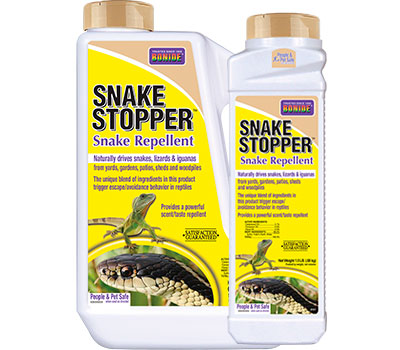
Most Effective Natural
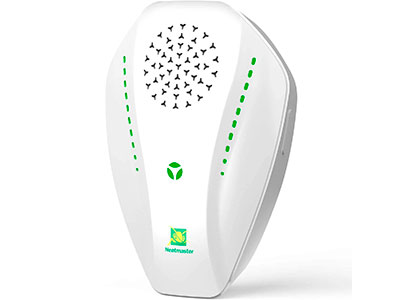
Best Electronic
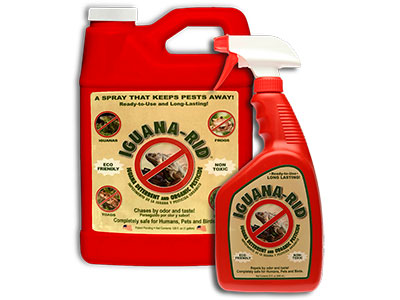
Best Spray Solution
- Understanding Lizards: Biology and Behavior
- What is the Best Lizard Repellent in 2025? – Buyer’s Guide
- Natural Repellents: Safe Solutions for Home Use
- Advanced Spray Repellents: Targeted Liquid Control
- Advanced Electronic Repellent Technologies
- Food Source Elimination: Indirect Lizard Control
- 5-Step Comprehensive Lizard Control Strategy
- Frequently Asked Questions
Understanding Lizards: Biology and Behavior
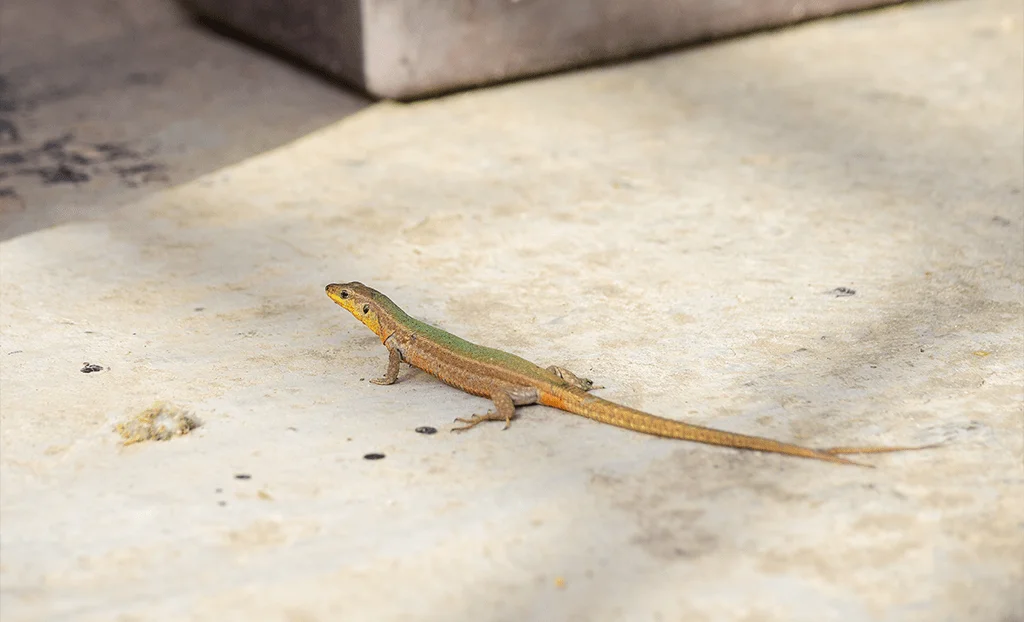
Understanding lizard biology and behavior is the first step toward effective control. These reptiles are attracted to our homes for specific reasons, and knowing what drives them helps implement targeted deterrent strategies.
Lizard Biology and Adaptations
Lizards have evolved remarkable adaptations that make them successful in human environments:
- Mobility: Many species can climb vertical surfaces and squeeze through tiny openings as small as 1/4 inch
- Thermoregulation: As ectothermic (cold-blooded) creatures, they seek warmth, making heated homes attractive
- Detachable tails: Most lizards can shed their tails when threatened, allowing them to escape predators
- Camouflage: Their coloration helps them blend into surroundings and avoid detection
- Sensory abilities: Heightened visual and olfactory senses help them detect both prey and threats
Lizard Diet and Feeding Behavior
Understanding what attracts lizards to your property is essential for effective control:
- Insectivorous diet: Most house-invading lizards primarily feed on insects, spiders, and other small invertebrates
- Feeding patterns: Many species are opportunistic feeders, consuming whatever prey is available
- Hunting behavior: House lizards typically “sit-and-wait” near light sources that attract insects
- Water needs: All lizards require water, making areas with moisture particularly attractive
Despite being unwanted guests, lizards provide significant pest control services by consuming mosquitoes, flies, spiders, cockroaches, and other household pests. A single lizard can consume hundreds of insects monthly, potentially reducing the need for chemical insecticides.
Why Lizards Become a Problem
While lizards offer natural pest control benefits, several factors make them unwelcome in homes:
Health Concerns
Lizard droppings may contain Salmonella bacteria, posing health risks, especially in food preparation areas. People with compromised immune systems, young children, and the elderly are particularly vulnerable to Salmonella infection.
Property Damage
Lizard droppings can stain walls, furniture, and fabrics. The uric acid in their waste can cause discoloration that’s difficult to remove from porous surfaces.
Psychological Impact
Many people experience genuine fear or disgust when encountering lizards, leading to stress and discomfort in their own homes. This herpetophobia (fear of reptiles) is relatively common.
Invasion Indicators
Finding lizard droppings (small, dark pellets with white tips containing uric acid crystals) throughout your home indicates a significant lizard presence that requires intervention.
What is the Best Lizard Repellent in 2025? – Buyer’s Guide
Even though most of us understand the ecological benefits lizards provide—consuming insects and spiders—fear and disgust toward these reptiles often outweigh their advantages. This comprehensive guide will help you evaluate the most effective methods and products for lizard control.
Our product recommendations are based on effectiveness, safety for humans and pets, ease of application, environmental impact, and longevity of protection. We’ve evaluated both commercial solutions and scientifically-verified natural alternatives.
After extensive research and testing, we’ve determined that the Neatmaster Ultrasonic Pest Repeller offers the best overall solution for most households. This device provides consistent protection without chemicals, making it ideal for homes with children and pets. For those preferring natural granular solutions, BONIDE Snake Stopper delivers excellent results, while Iguana-Rid Spray provides the most effective liquid repellent option.
Natural Repellents: Safe Solutions for Home Use
Natural lizard repellents offer effective control without exposing your family, pets, or beneficial wildlife to harsh chemicals. These products harness plant extracts and essential oils that lizards find repulsive.
BONIDE Snake Stopper Repellent Granules
Most Effective NaturalHow Does It Work
How to Use
- Create a 6-8 inch wide band around areas you want to protect
- Apply near doorways, windows, utility openings, and other access points
- One pound treats a band 8 inches wide by 50 feet in length
- Do not water after application
- Reapply every two weeks or after heavy rainfall
- Creates an effective barrier lizards won't cross
- Pleasant, natural scent compared to chemical alternatives
- Safe for families, pets, and the environment
- Biodegradable formula
- Versatile indoor/outdoor application
- Requires consistent reapplication, especially after rainfall
- The scent may be too intense in enclosed spaces
- Higher cost per square foot than some chemical alternatives
Safety Profile
BONIDE Snake Stopper offers several safety advantages:
- 100% biodegradable formula breaks down naturally without environmental accumulation
- Safe for use around children and pets when applied according to directions
- Non-toxic to beneficial insects, wildlife, and plants
- Pleasant cinnamon-clove aroma that’s generally agreeable to humans
ORTHO Snake-B-Gon Repellent Granules
Most Comprehensive FormulaHow Does It Work
How to Use
- Remove the seal under the cap and replace the shaker top
- Apply in a 4-6 inch wide band around the protected area
- Distribute evenly without completely covering the ground
- Reapply approximately every 30 days or after heavy rainfall
- Multi-oil formulation targets multiple lizard senses
- Rain-resistant technology extends effectiveness
- Larger coverage area per container
- Biodegradable with no long-term environmental impact
- Strong initial scent may be temporarily unpleasant
- Less effective in areas with persistent moisture
- Requires more frequent reapplication than claimed in extremely humid climates
Comprehensive Protection Strategy
The diverse blend of essential oils in ORTHO Snake-B-Gon provides multilayered protection through different repellent mechanisms. The cinnamon oil and clove oil create an olfactory barrier, while the geraniol and mint oil target the lizard’s taste receptors, making any contact with the granules highly unpleasant. Additionally, the castor oil creates a texture lizards find uncomfortable to cross, providing physical deterrence alongside the chemical repellents.
Key Benefits
ORTHO Snake-B-Gon offers several advantages:
- Superior coverage: 2 lb. container treats up to 1,440 sq. ft.
- Rain-resistant formula maintains effectiveness through light precipitation
- Long-lasting protection for up to 30 days between applications
- Biodegradable, environmentally responsible ingredients
Application Guidelines
For optimal results:
- Remove the seal under the cap and replace the shaker top
- Apply in a 4-6 inch wide band around the protected area
- Distribute evenly without completely covering the ground
- Reapply approximately every 30 days or after heavy rainfall
Advanced Spray Repellents: Targeted Liquid Control
Spray repellents provide excellent targeted control for specific problem areas. These liquid solutions can be applied precisely where lizards are active or entering your home.
Iguana-Rid Ready-To-Use Spray
Best Lizard Repellent SprayHow Does It Work
How to Use
- Identify entry points and lizard activity areas
- Spray directly on these surfaces, including window frames, door thresholds, and utility entry points
- Pay special attention to areas behind shutters, gutters, and electrical boxes
- Reapply every 3-5 weeks, adjusting based on rainfall and lizard activity
- Precise application for targeted control
- Effective on a wide range of reptiles and pests
- Child and pet safe when used as directed
- Made in the USA with eco-friendly ingredients
- Strong initial garlic odor (dissipates after 24-48 hours)
- May require more frequent reapplication in rainy conditions
- Higher cost per square foot than granular options
Targeted Application Benefits
Unlike granular repellents, Iguana-Rid’s spray format allows for precise vertical application on surfaces where lizards climb, such as walls, fences, and trees. The liquid formulation penetrates cracks and crevices that granular products cannot reach, creating more comprehensive protection in complex environments. For maximum effectiveness, combine with perimeter granular treatments to create a multi-layered defense system.
Advanced Repellent Technology
Iguana-Rid combines powerful natural repellents with surfactants that enhance adhesion and longevity. The key ingredients include:
- Garlic Oil (2%): Contains sulfur compounds that trigger strong avoidance responses in lizards
- Cinnamon Oil (1%): Creates an aromatic barrier that repels without harming lizards
- Sodium Lauryl Sulfate (0.5%): Enhances adherence to surfaces and extends effectiveness
- Citric Acid (0.2%): Stabilizes the formula and creates an acidic environment lizards avoid
This USA-made formula provides up to 30 days of protection per application, covering approximately 240 square feet (12′ x 20′ area) per 32 oz bottle.
Strategic Application Technique
For maximum effectiveness:
- Identify Entry Points: Survey your property to locate areas where lizards are entering or congregating
- Target Application: Spray directly on these areas, including window frames, door thresholds, utility entry points, and along building perimeters
- Comprehensive Treatment: Pay special attention to areas behind shutters, gutters, electrical boxes, and other protected spaces where lizards may hide
- Maintenance Schedule: Reapply every 3-5 weeks, adjusting frequency based on rainfall and severity of lizard activity
For enhanced effectiveness, combine Iguana-Rid spray with a granular repellent like BONIDE Snake Stopper. Apply the spray to vertical surfaces and entry points, while using granules to create a barrier around the perimeter of your property.
Lizard Defense All Natural Deterrent and Repellent Spray
Best Indoor Lizard RepellentHow Does It Work
How to Use
- Spray on hiding places like wall areas behind furniture, appliances, and decorative items
- Apply to wall or ceiling areas around lights where insects gather
- Treat door and window frames, ventilation openings, and utility access points
- Safe for application on carpets, furniture, flooring, and walls
- Specifically formulated for indoor use
- Low odor formula for living spaces
- Extended protection up to six weeks
- Surface modification prevents lizard climbing
- Less effective on porous surfaces
- Limited outdoor application in wet conditions
- May require multiple applications for severe infestations
Indoor Environmental Considerations
When applying Lizard Defense indoors, ventilation is an important consideration. While the formula is designed to be low-odor and safe for indoor use, ensure adequate air circulation during application by opening windows or using fans. The spray is particularly effective when applied in a comprehensive pattern that creates complete barriers around entry points and travel routes lizards commonly use within the home.
Specialized Indoor Formula
Lizard Defense employs a multi-mechanism approach specifically designed for indoor use:
- Surface Modification: Creates a slippery barrier that prevents lizards from climbing treated surfaces
- Sensory Deterrent: Natural compounds trigger avoidance behavior without harmful effects
- Extended Protection: Residual effect lasts up to six weeks per application
- Low Odor: Formula designed to minimize sensory impact on humans while maximizing effect on lizards
Strategic Indoor Application
Focus application on key areas:
- Hiding Places: Wall areas behind furniture, appliances, pictures, clocks, calendars
- Gathering Spots: Wall or ceiling areas around lights where insects (lizard prey) congregate
- Entry Points: Door and window frames, ventilation openings, utility access points
- Surface Types: Safe for use on carpets, furniture, flooring, shelves, and walls
Advanced Electronic Repellent Technologies
Electronic repellents offer several advantages over chemical solutions, including continuous protection without reapplication, no potentially unpleasant odors, and environmentally friendly operation with minimal maintenance requirements.
Neatmaster Ultrasonic Pest Repeller
Best Electronic and Easiest to UseHow Does It Work
How to Use
- Simply plug the device into a standard electrical outlet
- Install units at approximately 12-32 inches above floor level
- Ensure unobstructed projection path (ultrasonic waves cannot penetrate solid objects)
- Place additional units for complete coverage in larger homes
- No chemicals or toxins
- Continuous protection without reapplication
- Silent operation (frequencies outside human hearing range)
- Energy-efficient design
- Effectiveness limited by physical barriers like walls
- May take 2-3 weeks for full effect
- Some lizard species may be less sensitive to ultrasonic deterrents
Scientific Basis for Ultrasonic Repulsion
The effectiveness of ultrasonic repellents is based on reptiles’ specialized auditory systems, which can detect frequencies between 1-7 kHz (for most lizard species). These frequencies interfere with their communication and navigation abilities, creating an environment that causes stress and discomfort. Multiple university studies have shown varied effectiveness rates (between 65-85% reduction in activity), with results depending on lizard species, device quality, and environmental factors.
Multi-Technology Approach
The Neatmaster Ultrasonic Pest Repeller utilizes three complementary technologies:
- Ultrasonic Waves: High-frequency sound (beyond human hearing range) disrupts lizards’ nervous systems and communication
- Electromagnetic Fields: Creates an uncomfortable environment that reptiles instinctively avoid
- Bionic Waves: Simulates predator patterns to trigger fear responses in lizards
This multi-sensory approach provides coverage for 80-120 square meters (approximately 860-1,290 square feet), making it suitable for average-sized homes and apartments.
Scientific Operation Principles
The effectiveness of ultrasonic reptile repellers is based on reptile-specific sensory biology:
- Lizards possess specialized inner ear structures that detect and process high-frequency vibrations
- The device’s electromagnetic field interferes with the electroreceptors some reptiles use for navigation
- The continuous alternating signals prevent habituation, maintaining effectiveness over time
Optimal Placement Strategy
For maximum effectiveness:
- Install units at approximately 30-80 cm (12-32 inches) above floor level
- Ensure unobstructed projection path—ultrasonic waves cannot penetrate solid objects
- Place multiple units for complete coverage in larger homes or those with many separate rooms
- Position near known entry points or areas with previous lizard activity
Most users report noticeable reduction in lizard activity within 1-2 weeks of installation. Complete elimination typically occurs within 3-4 weeks as the reptiles seek more comfortable environments.
MaxMoxie Ultrasonic Pest Repeller
Best Coverage RangeHow Does It Work
How to Use
- Plug into standard electrical outlets
- For maximum effectiveness, install multiple units on different circuits or levels in larger homes
- Position devices to minimize obstructions that can block ultrasonic waves
- Allow 2-3 weeks for full effectiveness as lizards gradually relocate
- Superior coverage area (1,200 square feet)
- Silent operation outside human hearing range
- Energy-efficient design
- No chemicals or maintenance required
- Physical barriers can create 'shadow zones'
- Initial investment higher than chemical alternatives
- Requires continuous power
Strategic Deployment Considerations
For optimal coverage in larger homes, strategic placement of MaxMoxie units is essential. Since ultrasonic waves cannot penetrate solid objects, position units to create overlapping coverage zones, particularly in areas where lizards are most active. Consider your home’s floor plan when determining unit placement, with special attention to potential entry points such as utility rooms, attics, and basements where lizards often first gain access.
Extended Range Technology
The MaxMoxie Ultrasonic Pest Repeller stands out for its impressive coverage capabilities:
- Effective coverage up to 1,200 square feet—ideal for larger homes or open-concept living spaces
- Triple-technology approach combining ultrasonic, electromagnetic, and ionic repulsion
- Penetrating technology reaches into wall voids where lizards often hide
- Variable frequency output prevents lizards from developing resistance
Operational Features
This advanced electronic repeller includes several user-friendly features:
- Silent operation—frequencies are entirely outside human hearing range
- Energy-efficient design with minimal electricity consumption
- Simple plug-and-play installation with no maintenance required
- Indicator light confirms proper operation
For maximum effectiveness in larger homes, consider installing multiple units on different circuits or levels. While a single unit can cover a significant area, physical barriers like walls and large furniture can block the ultrasonic waves, creating “shadow zones” where lizards might still feel comfortable.
Food Source Elimination: Indirect Lizard Control
While direct repellents are effective, addressing the lizard’s food supply is a crucial complementary strategy. Eliminating the insects lizards feed on makes your property significantly less attractive to these reptiles.
Comprehensive Insect Management Strategy:
- Treat the foundation around your building with perimeter insect control products
- Use targeted indoor insect treatments in problem areas
- Eliminate conditions that attract insects: standing water, food residues, excess moisture
- Seal entry points that allow insects into your home
BioAdvanced Complete Insect Killer Concentrate
Best Insect Control SolutionHow Does It Work
How to Use
- Dilute according to label instructions for targeted pest control
- Apply a 3-5 foot band around your home's foundation and up to 3 feet up the wall
- Treat entry points where pipes, wires, and vents penetrate the structure
- Ensure thorough coverage of doorways, window frames, and other insect entry points
- Addresses the root cause of lizard presence (food source)
- Both immediate and residual insect control
- Versatile application for various surfaces
- Concentrated formula provides economical coverage
- Contains pesticides requiring careful handling
- Must keep children and pets away from treated areas until dry
- Not suitable for food preparation surfaces
Integrated Pest Management Approach
For maximum effectiveness, incorporate this insect control solution into a comprehensive lizard management strategy. By eliminating the insects lizards prey upon, you create an environment where lizards must expend more energy searching for food, making your property less desirable. This indirect approach is particularly effective when combined with direct lizard repellents and exclusion techniques, creating a multi-faceted defense that addresses all aspects of lizard habitat preferences.
Dual-Action Insect Control
BioAdvanced Complete Insect Killer employs two complementary active ingredients:
- Imidacloprid (0.72%): A systemic insecticide that disrupts insect nervous systems, providing long-lasting residual control
- Beta-Cyfluthrin (0.36%): A fast-acting pyrethroid that delivers immediate knockdown of active insects
This combination provides both immediate and extended protection against the insects that attract lizards to your property.
Strategic Application
For effective insect management:
- Dilute the concentrate according to label instructions
- Apply a 3-5 foot band around your home’s foundation and up to 3 feet up the wall
- Treat entry points where pipes, wires, and vents penetrate the structure
- Ensure thorough coverage of doorways, window frames, and other insect entry points
5-Step Comprehensive Lizard Control Strategy
Effectively eliminating lizards from your home requires a systematic, multi-faceted approach. This 5-step strategy addresses both the lizards themselves and the conditions that attract them.
Step 1. Make Your Home Inhospitable to Lizards

Create an environment lizards find unwelcoming:
- Temperature Regulation: Lizards are ectothermic (cold-blooded) and seek warmth. Maintain cooler indoor temperatures, especially in problem areas.
- Eliminate Clutter: Remove piles of magazines, boxes, and other materials that provide hiding places.
- Regular Cleaning: Maintain clean floors and surfaces to eliminate food particles that attract insects.
- Reduce Humidity: Use dehumidifiers in damp areas that might attract lizards seeking moisture.
Research shows that lizards prefer environments with temperatures between 75-90°F (24-32°C) and moderate humidity. Keeping your home cooler and drier significantly reduces its attractiveness to these reptiles.
Step 2. Seal Entry Points
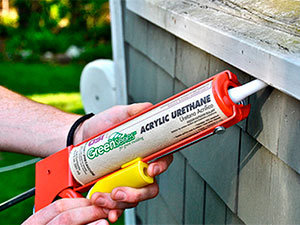
Prevent lizard access with thorough perimeter sealing:
- Comprehensive Inspection: Examine your home’s exterior for cracks, gaps, and holes—lizards can squeeze through openings as small as 1/4 inch.
- Targeted Sealing: Use silicone caulk for small cracks, expanding foam for larger gaps, and fine mesh for vents.
- Door and Window Protection: Install weather stripping and door sweeps to eliminate gaps.
- Utility Penetrations: Seal openings around pipes, cables, and other utilities entering your home.
Step 3. Eliminate Food Sources
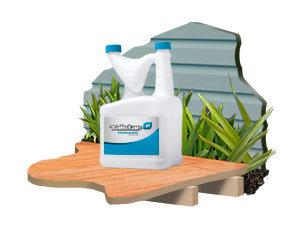
Target the insects that attract lizards:
- Perimeter Treatment: Apply insecticides around your home’s foundation to create a protective barrier.
- Indoor Insect Control: Use appropriate indoor treatments to eliminate insects inside your home.
- Light Management: Replace outdoor white lights with yellow “bug lights” that attract fewer insects.
- Food Storage: Keep food in sealed containers to prevent attracting insects.
Step 4. Create an Unwelcoming Environment
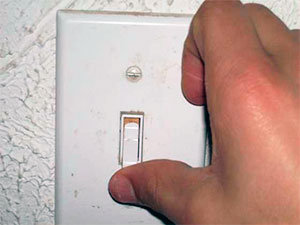
Modify environmental factors lizards find attractive:
- Lighting Adjustments: Minimize unnecessary lighting, especially at night, to reduce insect attraction.
- Temperature Control: Maintain cooler temperatures in problem areas through air conditioning or ventilation.
- Repellent Application: Apply natural or commercial repellents to create sensory barriers.
- Electronic Deterrents: Install ultrasonic devices in areas with frequent lizard activity.
Step 5. Eliminate Standing Water
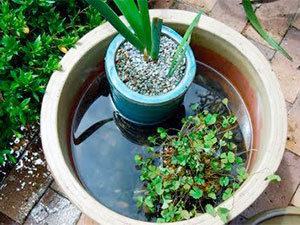
Remove moisture sources that attract both lizards and their prey:
- Container Inspection: Empty and invert buckets, pots, bowls, and other items that collect water.
- Drainage Improvements: Ensure proper drainage around your home’s foundation.
- Leak Repairs: Fix leaking faucets, pipes, and irrigation systems.
- Gutter Maintenance: Keep gutters clean to prevent water accumulation and insect breeding.
Managing Lizard Droppings: Identification and Safe Removal
Lizard droppings can pose health risks and require proper identification and handling:
Identification Characteristics
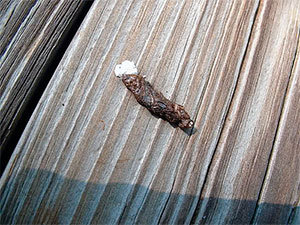
- Appearance: Small, dark pellets with distinctive white tips
- White Tip Explanation: The white portion is crystallized uric acid, resulting from the lizard’s combined excretion system where waste and urine exit through the same opening (cloaca)
- Size: Typically 1/4 to 1/2 inch in length, depending on the lizard species
- Location: Often found along walls, in corners, beneath furniture, or near light fixtures
Health Concerns and Safe Removal
Lizard droppings may contain Salmonella bacteria, requiring careful handling:
- Protective Equipment: Wear disposable gloves and consider using a mask when cleaning droppings
- Disinfection: Spray the droppings with a household disinfectant and allow to soak for 5 minutes
- Removal: Use paper towels to collect the droppings, sealing them in a plastic bag for disposal
- Surface Cleaning: Clean the affected area thoroughly with disinfectant after removal
- Hand Hygiene: Wash hands thoroughly with soap and warm water after cleaning, even if gloves were worn
Professional Assistance
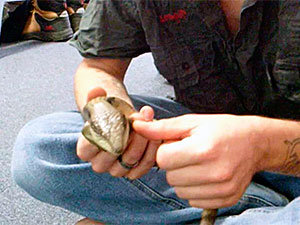
For severe infestations or persistent lizard problems, professional pest control services offer significant advantages:
- Comprehensive property assessment to identify entry points and attractants
- Targeted application of professional-grade repellents and barriers
- Strategic trap placement for existing lizard population
- Integrated approach addressing both lizards and their food sources
- Follow-up inspections and maintenance treatments as needed
Frequently Asked Questions
Do mothballs repel lizards?
Mothballs can temporarily deter lizards due to the strong naphthalene or paradichlorobenzene odor that lizards find offensive. Placing mothballs near entry points can create a barrier that discourages lizards from entering those areas.
However, mothballs have significant limitations: they release potentially harmful vapors, pose poisoning risks to children and pets, and their effectiveness diminishes as the scent dissipates. For these reasons, purpose-designed lizard repellents generally provide safer and more effective long-term protection.
Are lizards harmful to humans?
Most common house lizards are harmless to humans. They rarely bite unless directly handled or threatened, and their bites are seldom serious. The main concerns with household lizards are:
- Potential Salmonella bacteria in their droppings
- Allergic reactions in sensitive individuals
- Psychological distress for people with reptile phobias
Of the 6,000+ lizard species worldwide, only two are venomous: the Gila monster and the Mexican beaded lizard, neither of which are typically found in residential settings. Many species are actually beneficial as they consume household pests like cockroaches, flies, and mosquitoes.
What smells do lizards hate?
Lizards have a highly developed olfactory system and are particularly sensitive to certain scents, including:
- Garlic: The strong sulfur compounds repel lizards effectively
- Hot Pepper/Cayenne: Capsaicin irritates lizards’ sensory organs
- Onion: Similar to garlic, contains repellent sulfur compounds
- Essential Oils: Eucalyptus, peppermint, and tea tree oils create barriers lizards avoid
- Eggshells: The scent may remind lizards of predators that consume eggs
- Coffee Grounds: Contain compounds and acids lizards find offensive
- Naphthalene: The active ingredient in mothballs effectively repels lizards
These natural scent deterrents can be used strategically around entry points and problem areas to discourage lizard presence.
How effective are ultrasonic repellers against lizards?
The effectiveness of ultrasonic devices for lizard control varies based on several factors:
Scientific Research: Studies show mixed results, with some indicating moderate effectiveness and others showing limited impact. Lizards can detect ultrasonic frequencies, but their behavioral response varies by species and individual.
Limitations: Ultrasonic waves cannot penetrate solid objects like walls, furniture, or cabinets, creating “shadow zones” where lizards may remain unaffected. Some lizards may also become habituated to consistent ultrasonic emissions over time.
Best Practices: For optimal results, use ultrasonic devices as part of an integrated approach rather than a standalone solution. Multiple devices may be necessary for larger spaces, and repositioning units occasionally helps prevent habituation.
How long do lizard repellents typically last?
Repellent effectiveness duration varies by product type and environmental conditions:
- Granular Repellents: 2-4 weeks, requiring more frequent reapplication after rainfall
- Liquid Sprays: 3-6 weeks indoors; 2-3 weeks outdoors (weather dependent)
- Electronic Repellers: Continuous protection as long as the device remains powered and functional
- Natural Deterrents: 1-2 weeks for essential oils and plant-based solutions; requires regular refreshing
For continuous protection, establish a regular maintenance schedule based on the specific product used and your local environmental conditions.
Can lizards become resistant to repellents?
Lizards can develop habituation (reduced response) to some repellent methods over time, particularly constant stimuli like ultrasonic emissions or unchanging scents. However, this is not true resistance in the biological sense that occurs with pesticides.
To prevent habituation, rotate between different repellent types or use combination approaches. For example, alternate between different essential oil blends or combine electronic and scent-based repellents. This variation in deterrent methods prevents lizards from becoming accustomed to any single repellent strategy.
How can I identify lizard entry points?
To locate potential lizard entry points around your home:
- Conduct a Night Inspection: Using a flashlight, check exterior walls after sunset when lizards are most active
- Look for Gaps: Examine areas around pipes, cables, vents, windows, and doors for openings (lizards can squeeze through gaps as small as 1/4 inch)
- Check for Droppings: Small, dark pellets with white tips (uric acid) indicate lizard activity areas
- Inspect Foundations: Pay special attention to cracks in foundations, especially near warm areas like HVAC units
- Monitor Light Fixtures: Areas around exterior lights attract insects, which in turn attract lizards
Once identified, these entry points can be sealed with appropriate materials or treated with repellents for maximum effectiveness.
Are natural repellents as effective as chemical options?
Natural repellents can be comparably effective to chemical alternatives when properly applied and maintained, though they often require more frequent reapplication. Essential oil-based products like those containing cinnamon, clove, or garlic oils have demonstrated significant repellent properties in both laboratory and field testing.
The primary advantages of natural solutions include safety around children and pets, environmental friendliness, and reduced risk of harmful side effects. For optimal effectiveness, natural repellents should be applied more frequently than chemical alternatives and used as part of an integrated approach that includes habitat modification and exclusion techniques.
Effective lizard control requires a comprehensive approach combining multiple strategies. Begin by making your home inhospitable through excluding entry points and eliminating food sources. Apply appropriate repellents based on your specific situation, and maintain consistent prevention measures over time. Remember that while lizards can be unwelcome house guests, they play a beneficial role in controlling insect populations in outdoor environments.
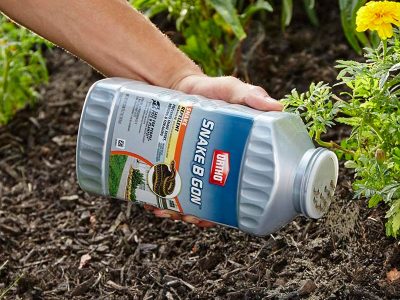
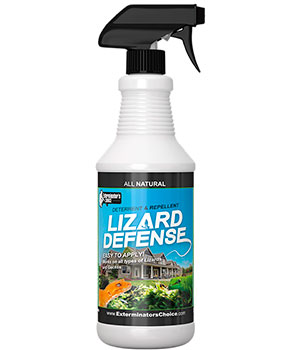


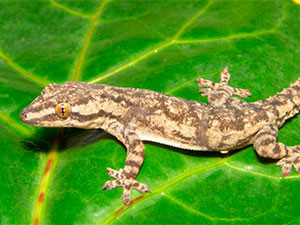

Kill them all! Humane my a… I am afraid to go out my front door.
Hello. This is one of the most interesting reads I’ve come across because I am having the same exact problem. I think it’s a lizard getting in my bed at night and crawling on my face but I’ve never seen it. I have a clean decluttered home and no problems with insects or any kind. I’m putting in a camera to try and catch whatever it is. I’ve tried most of the things mentioned on this page but nothing seems to work. I am not sleeping at night and it’s causing me to be tired during the day. If it’s not lizards, what else can it be? What ever it is it’s small and very fast. No, I do not have mice or roaches.
Some people are sooo ignorant and arrogant. So many state that they love lizards and just can’t understand why anyone would fear them since they are harmless and help control bugs.
Well to all of you who feel that way, you clearly have no understanding of human phycology and what’s worse, you are arrogant about your ignorance. Phobias are real for one person and not another. That’s why it’s called a phobia. Although the definition of the word phobia includes the word “irrational” it doesn’t matter, since no amount of logic can eliminate the phobia. …. Oh but wait, nevermind, ignorance prevents comprehension of that logic.
10 types of people in this world, those that understand logic and those that don’t.
Update: Cayenne, onion, garlic and lemon didnt work for me. Bleach worked until it dried.
Raid Max, as someone suggested on here, worked like a charm. Just spray it everywhere and on the lizard/s. They lizards go or die. Its the easiest fix by far.
Onion juice
PS im trying cayenne pepper and garlic around the house.
Hey guys,
Lets all agree to disagree. We all know some people love lizards and some people hate lizards. Personally, I have a love hate relationship with these creatures. I love them in the zoo, but I hate them in my house, lol Yes we probably shouldnt have set our houses on their little heads, but we had to live somewhere, right. So…lets stick to the topic.Tell us what did or didnt work for you. Save your spats for the lizards.
I’m super scared of these little suckers and just cannot stand them around me, be it outside or inside my place. Please help me with a permanent solution to getting rid of them. I just don’t want to see them.
Screw these geccos and lizards – They are eating my flowering plant leaves and causing their blooms to drop off before they even have a chance to flower. I’m killing these suckers and applying the strongest thing that will kill all bugs, lizards, geccos, aphids, etc etc.. because I’m tired of spending literally $100’s of dollars replacing my plants !!!!
I have a new house just move in February 1 2018 and already 12 came in I am sick of them i dont like them from I was a child growing up i was a fraid of lizard and it get worse i dont want to see them inside the there house is in the tree please help me to get rid of these lizard what kind of repellent work best for lizard i need help to get rid of these lizard
In South Florida, we have a iguana invasion! They are everywhere, they are huge, they are dangerous, they are invasive. They destroyed so many of my plants, like hundreds of dollars worth. I put up netting on the fence, that helped a bit to keep the really big monstrous ones out. I sprayed Iguangone spray, and even put down anti-pest granules. They are said to avoid citrus, so I have a bunch of citrus plants. But they destroy everything. I need an effective killer.
I have a butterfly garden and the lizards and frogs eat the caterpillars. Any suggestions on how to get rid of them? I also have “curly tail lizards” that are faster than Mario Andretti, these guys leave huge poops all over the patio.
I am glad I am not the only one freaked out by the lizards. I live in DC and just saw a nine inch one on the front steps of my apartment building. The guy downstairs told me that they hang by the trash at night, but I take out the trash during the day and never saw them. We have deer, foxes, hedgehogs, and other wildlife around my neighborhood, but this just makes my skin crawl. It could crawl in my apartment or the old people downstairs could see them and pass out. I called the rental office and the lady sounded like it was abnormal. But, I have been in my place for 12 years, so I just know that she is going to fix it before I see another one and start a riot around this joint. The city has been fixing/replacing water pipes since the beginning of the year and all the animals seem to be coming out more with all the digging and cutting of trees going on. I’m going to keep this site in mind, just in case the issue persists and I need to get rid of these things myself. Geez!!!
The only way to treat Herpetophobia (fear of lizards) I guess is therapy. Anyway, I am terrified of them and am a prisoner in my own home due to not opening the back door for fear they will get in. Can’t wait to try some repellants (don’t want to kill them) to make them go away. Maybe I can enjoy my backyard again!!
If I alive lizard in human stomach/belly, is there any way to get rid of lizard using any killing medicine not effecting human body
Please tell me something that actually kills lizards. Don´t want a repellant. Want to get rid of these creatures permanently otherwise they will always find their way back into the house
I have nothing against lizards but the Asian house geckos are a nuisance. They are attracted to the insects on the lights outside & as their numbers increase eventually they find their way into your house. Then they get into drawers & shit & lay eggs in your clothes & also in books or anything. They love getting inside computers because of the warmth. They can cause a lot of property damage & spread disease. It’s best to take action to get rid of them asap before their numbers increase. Some people have plagues of them & I really don’t know how they will manage to stop them. In plague situations you can clean them out but next year they return. It becomes an on-going battle.
Hi. Using a vaccum cleaner solves lizard problem. It sucks lizards like dust.
Some comments are hilarious. You do realize this creature is about 10,000 times smaller than You. I have never seen an anole with teeth, maybe You grabbed an Iguana, which will be more apt to bite the hell out of You if it is scared
Lizard could be got rid of by spraying any insecticide in a week’s time
All those who are against kiiling lizards are totaly weird.I mean I have Killed a million lizards and I couldnt be happier. These creatures are bound to be throw away from our house ps, they are disgusting
I have a lizard epidemic in a small building I use as a craft house. These lizards think they own the joint. It is clean and things are in order. I’m so tired of being scared when I take something off the peg board. The idea of them landing on me is disgusting. I have a pest control guy who sprays for other insects there every month. He is an anti killer of the lizards. I offered him all of mine. And whoever feels they should keep on living, power to you, you more than likely are not pestered by them like most of us here.
I’m going to first pack my entire building up. Clean it real good. Spray and try to find every lizard and be rid of them using many of the remedies I read here.
Caulk everything in and out. I am considering caulking things that may not need caulking to make sure.
I will repaint everything. Getting the electronic devices to keep them away. We have the mice ones and they work well. Found them at Lowes.
I tried the pepper mixture before and it didn’t work for me. I tried some granules and put it all around the building last week only to come and find lizards crossing it and climbing to the roof.
I sprayed a couple days ago some lizard repellant spray and it made them fall and they ran, but are they still there……..????
I’m on a mission to get rid of them. Anyone here used the raid max that was mentioned? Did it make them run or did it kill them?
Any other suggestions from anyone would be so helpful because I can’t relax and enjoy my getaway place with these pest. And please understand I’m not taking about ten of them……..I’m talking hundreds that I actually see, could be more that I can’t see.
Point is its my house they can stay outsd..n i dont need permission from anyone to do wat i please with my space
If you are in south Florida, please think twice before letting your kitten catch the lizards and frogs. They can carry a parasite that can eventually kill your pet. I know from experience because I have a one year old kitten that loves to catch them, but doesn’t eat them. I paid huge vet bills to find out why my kitten’s liver enzymes were 10 times more than the upper limit. Liver flukes.
My cat caught one last night about 1 inch long, it was in my bedroom. That room is the farthest away from the entry doors. No windows open in room, have no idea where they are coming in at. Had a small problem last year with 3 very small ones, then they were gone. Please any suggestion will be greatly appreciated. Really don’t want to use insecticides with my kitty roaming around the house.
I do not mind non invasive lizzards but we now have jesus lizzards they grow very large, they run very fast and even run upright. We saw one 2 foot long. I guess he is king of his kind. We have lots of them and they really creep me out. I do not want to kill them. I just want them away from me. Thanks for all recommendations, I will try to get them to go to the vacant 10 acres next to me.
yeah… some shit droppings actually falling on my bed…. lizards disgust me alot….
I feel the best, easy and cleanest method to get away lizard is by using electrical ultra frequency device.
I have pretty large one (10″?) on my patio right now and he’s right next to an ultrasonic frequency device. Lol.
I’m not scared of lizards when they are outside, but when they enter my apt I will poison them with cayenne pepper, salt, and bleach again. I don’t care how cute other people think they are.
OK Lets get started how do you mix up this concoction please. I have had them run over my face in bed at night and would need to employ a mountain of staff to get rid of insects they feed on, like pull all the furniture out every day, tip it upside down to look for insects underneath, look up in ceilings etc. These things are a real problem and I do not know what to do. I hate them totally
Lizard control any chemical on spot kill to apply chemical and please say frequency for spray .
This year was the first time in 20 years the lizards ate my sweet pea seeds that I planted leaving nice shallow holes. I love lizards because I grew up with them in Hawaii but its a different story today in California and I want to keep them away and realize the only way is to put a KAPU sign up that they are not wanted and its a stiff penalty for going into the flower bed so I need to keep them out but if they eat the seeds its going to be bad.
Am really scared of lizards… If i can see it i wont step to that place again.. i really asking for help how to get read of them @ my place.
Just want to point out that if you have a lot of lizards around it’s because you also have a lot, a lot of bugs that the lizards are feeding on. If you get rid of the lizards, you’ll have serious bug problems and will then need to deal with a even more serious problem. Maybe we should focus on reducing the bugs.
i think the best repellant is ultrasound.
Where can you purchase the Obasan Organic Lizard Repellent in the United States?
Thank you for the article, thanks for all the comments, too. When we were kids, we played with lizards, garden snakes, frogs, fireflies, worms, etc. Never got hurt, never afraid. So, one day, as an adult, i grasped a rather large lizard to throw him outside in the compost pit. He was probably 6 inches long, including the tail. As i was walking, holding him just behind his front legs with my right hand, he swung his jaw around to my left hand, which i was holding out in front of me, caught my first finger and chomped down just by the first digit. That little bugger had teeth like a saw! I didn’t know they had teeth! And blood immediately spurted out. Having him in my right hand, i began to squeeze him strongly; thus he opened his mouth and let go of my finger. I went ahead and walked him to the pit and dropped him in, then tended to my still bleeding wound. Since that time, i am unable to handle lizards. Sometimes we see the older, larger ones on the wall, so we bring in the cat and try to knock it off the wall with a broom, so that it lands in front of the cat. Cats will usually catch and eat lizards completely but they often vomit part of them as they can’t digest them well. Then you have the vomit to deal with if it is on your porch or walkway. 😛
lizard know the glue color you need to change the color I do one week I used the paper glue in white next week I put the black trap one from Home depot now I see them away I works
I’m sorry for everybodywho is a afraid of lyzards but don’t you think that you kill a animal humane does glue trap cost a lot of suffering for those little creatures do spraying there
body with poisoning it’s just disgusting and cruel shame on you preferred to live with spiders and cockroaches
Glue Boards work great. Buy on amazon. One board may capture 6 or more lizards.
The best thing to do is to use chemical insect repellents like Hit (red one). Spray it directly on the lizard or into the space where you think it is hiding. The critter immediately becomes disoriented and falls to the floor. It will try to crawl away but will be lethargic. Keep on spraying a little more. You will have to kill it using a broomstick or whatever. Use something that will not squish it into pulp. Otherwise your floor will be really messed up. Killing it is the hard part as it will keep on wiggling and thrashing about, will bite off its tail, etc. Pretty disgusting affair.
I had to kill one yesterday…..a flip flop shoe works great!
Eeeww that’s super disgusting. Am a guy and my lizard phobia is making my life miserable mostly because I feel I may be laughed at if people knew. I never used to be disgusted by the creatures but thanks to one traumatic incident I can’t stand them.
I don’t have lizards in house, but they are all over the yard, trees and porch. I am so frightened of them..I don’t want to go out. Aren’t there pest control people that can get rid of them? I think they are under the house. I’m too old to do all the suggestions such as mothballs, etc. Help!
Mix coffee powder with tobacco powder make balls n spread where usually you see lizards or corners behind our furniture so when lizard eat it they will die. Hope this tip will help
So where exactly is your furniture?
I will start with your suggestion first. If we can get rid of them first then we need to clean everything. I hate the thought of finding these dead things everwhere. Hope they don’t stink when they die.Maybe set some glue traps so I can confuse them
My house is near the main water valve from the county Constant problem they are invading our living area, DONT KNOW HOW TO KILL THEM!
Me having same problem lizards in my home.. Specially it’s in kitchen. Im vry much irritated and disturbed… How to prevent from the lizards
It seems that no treatment to kill lizards are avaialable in local market,kindly mention proper name of poison to approch the shops.
Thanks
Raid Max
A friend of mine sometimes sleeps on the couch. The lizard stays back of fridge. My friend has had bite marks a lot of times. Even when she covered herself with a heavy jacket, she would have marks. Then it got to my bedroom and scratch my foot.
How much to get someone professional to get the sucker out of my home?
Thank you for all the comments. I am terrified of lizards and everyone tells me how good they are. Now I know I am not alone. Especially agree with Murugan. My little darlings sit in front of my door making it hard to get into the house. Will try all of your suggestions. Good luck to all of you
Dear Everyone!
Solution is very SIMPLE. Just SEAL ALL HOLES in the house/apartment!!! Every window, door should have steel mosquito net, also the exhaust fan holes. Block all holes around windows, if there are any, with white cement or plaster. Find and seal every hole in your home. Dont leave doors, windows open. Ventillation can happen very nicely through the mosquito net. Just takes little effort, you can make your home 100% Lizard and even Mosquito Free!!! No entry holes, No Problem!!! :)))
I dont usually hate lizards but there is one mighty devil it races towards other lizards like a bullet and eats their tails but sometimes in the process they fall from the ceiling right on floor or bed then it gets disgusting.I am gonna try looban.
Tired of gecko droppings everywhere, I tried a box of mothballs (the new benzene type) scattered around the interior and exterior of my house. They virtually vanished for a few weeks, then returned in force. So I tried the old naptha style – with a heavier scent – and the lizards would crawl right by them. I’ve gone back to the new kind, and found that just one in each infested room (in a corner on the floor, to keep the smell at minimum), and couple in the attic and outdoors, replaced monthly, is very effective!
Raid Max is very effective at killing lizards and frogs in the home. Spray it directly on the pest. If you have a lizard hiding somewhere in the home, you know it’s there but can’t see it, spray a little Raid Max as close as possible to where you think it is, and wait. In 5-10 minutes it should come out of it’s hiding place allowing you to spray it directly or kill it in some other way.
What is with all the hate in this world? Now little lizards are too much to handle? You are all seriously dysfunctional and need to look into what your
real problem is on the inside. To take your personal issues out on innocent little animals is pure evil. I am so disgusted. They have a right to be here too.
Yes your right they do but not in my home…. They have plenty of room outside. I don’t bother them in their space so they shouldn’t bother me in mine.
Yes Nunya exactly my reply. I paid over $2,000,000NZD for my house but not for the purpose to house lizards whose breeding programme is to take it over
You invaded their soace by putting a house there
Really? Why are you looking at this site if you feel that way? I’m so happy you aren’t scared of lizards, but obviously we are and that’s why we want them away from us….
Tell it…..so true.
Actually there is a major invasive species of lizard that is the main one seen in houses, at least here in the tropics. I have no problem with other lizards but this type displaces native species. I live in Costa Rica and the invasive ones from Asia totally dominate and outcompete the others. Still don’t understand why some people scorn or fear cute lizards though.
Like you, I cannot understand why any one would actually want to get rid of a lizard from their yard. I’m gobsmacked. I know I have a lizard in my yard, I see its droppings, I would LOVE to see it.
I love the little guys & am not fearful of them, but their droppings inside my house have become mountainous. My home is clean & uncluttered, but apparently they still like my company! Visitors often mistake their droppings as rodent poop. I want them around my house just not in it. When they get in & cannot find food or water, eventually they leave behind skeletal remains.
yard ok but not my house or blueberries thay got to go.
I love lizards but there are so many in my apartment and they love to live behind my bedside cabinet in the lamplight – for example – all those droppings are unhealthy . . . I want to deter but not kill.
Thanks for all the information.
My condo is currently listed for sale so I can’t afford to have a lizard running around during an open house. I’ll go out of my way to kill any lizard insight. I’m so ruthless I’ll let them save me 15% on my car insurance and then I’ll slit its throat.
they dont have any right to interfere in my house..if u love take all of them to your house
yeah.. right… I hate the crawling sounds all over my roof…
Hate is a strong word to use. You do not know everyone situation. Yes lizards has a right to be here, but they don’t have a right to invade my home. During the spring and summer months, geckos come to live on the side corner and the top of my front door. These little creatures also enter my house and I do not like it all. I can see that it’s been two years since you posted your rude post. I truly hope you feel better. Whether you like it or not, I have purchased the Ridsect Lizard Repellent and it’s doing an excellent job of keeping these pests from clinging on my door and making a way in my house. There is a solution to every problem.
hate is not even the right word for me. I DETEST those things!!!!
So your perfect nothing bothers u I mean absolutely nothing your wierd
If you do not resist the onslaught of nature encroachment, nature will over-run your garden, home and life. Man must fight back against the ravages of uncontrolled intrusion by nature.
I live in Thailand where these pests can become an epidemic if you don’t take steps to control them. Where do you live? How many lizards there?
That’s all fine, unless you have a dog. In which case they eat lizards on the porch, and if you don’t stop your dogs from eating the lizards (which many people can’t do), then a dog can get bacterial infections or parasites that can be deadly. It also teaches the dog to attack smaller animals, which is a bad thing. Killing lizards on your porch is a good step towards having a good dog that doesn’t learn to pounce on and kill small animals.
They carry disease in their droppings. Salmonella is one. They crap all over everything, including furniture!
It shows you are realy psychopath. If you like such a nasty animals, keep in your home and pray for them.Human have a right to live in very clean area without getting dangerous diseases that transmit with different kind of animals. Public health and safety is number one.
I live in Miami and we have an infestation of iguanas that are both legally declared as an invasive species and carry salmonella. They destroy all my plants. I think they have caused thousands in damage.
they have the right to be here….but when they pooped all over everything on the porch…its time to send them away from the porch and cloth furniture
Great advice. Lots to read, but good knowing there are so many choices. I will try 3 at once to eliminate the problem.